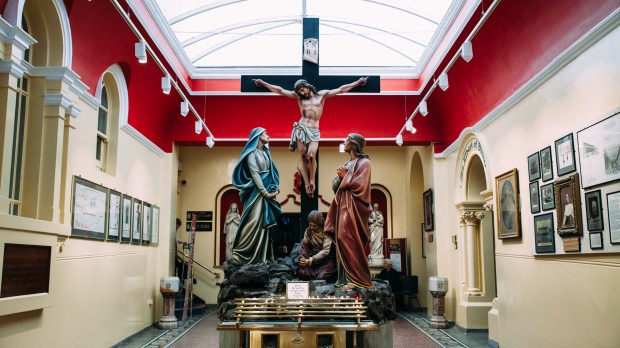In many Catholic Church buildings, there are frequently areas which are called by the pastor or parishioners the “narthex” or the “vestibule.” While most people use these terms interchangeably, they were originally separate architectural spaces with different functions.
What is a vestibule?
A vestibule was initially intended to be a covered hall that was immediately outside the main doors.
The Catholic Encyclopedia explains that, “The purpose of the vestibule, at least in western Europe, was not to provide a resting-place for penitents, but to deaden the noise outside. In medieval times Italy held firmly to the simple open chamber with sloping roof. North of the Alps, however, the vestibule developed into a projecting structure united with the main building, recalling the Syrian churches.”
Many of the churches in the city of Rome have these exterior vestibules lined with large columns.
This area was also called the “Paradise,” in reference to a “Paradise Play” that was held in this area during the Middle Ages.
What is a narthex?
Most frequently referred to as the “gathering space” in modern churches, this area of the church is within the main doors, but is immediately before entering the main part of the space reserved for worship.
Historically this was a place either outside or inside the church building and was the location where catechumens, who were not yet admitted into the Church, would stand. They were not yet part of the Body of Christ through Baptism and had to wait until Easter to walk through the doors and become united with rest of the congregation.
This physical separation was a visible sign that they were not yet in full communion with the Catholic Church, and the narthex is where the Rite of Baptism would begin. The priest would then ceremoniously lead the catechumens into the church building and to the baptismal font.


